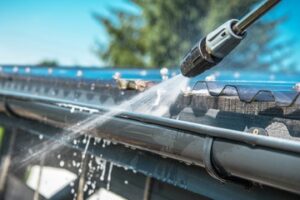Imagine a caesar salad in sandwich form with the classic flavours of bacon and parmesan cheese sandwiched between two buttery brioche buns oozing with a homemade lemon mayo. Now you’ve got the best fried chicken caesar ever!

In a shallow dish combine flour, salt, black pepper, garlic powder, paprika and cayenne pepper. Place chicken thighs into the flour mixture and season.
A tangy, delicious and crispy chicken Caesar salad recipe. This version of a classic salad is packed full of flavour and texture thanks to the air fryer fried chicken cutlets and store bought Caesar salad dressing. It’s a quick and easy dinner to make for the whole family.
Toss romaine lettuce (also known as cos lettuce) with grated parmesan cheese and freshly cracked black pepper, then add the chicken slices and croutons. Pour over the FPFC Caesar Dressing and serve!
This chicken Caesar salad is a great way to get your family to eat more vegetables. Romaine lettuce has a mild flavour and crisp crunchy texture, it’s ideal for this salad and you can find it at most grocery stores.
If you don’t have a lot of time, skip the chicken coating and just make the salad without it. This is still a tasty and filling meal that your family will love.
You can make this salad any time of day as it’s perfect for lunch or dinner. It also makes a lovely picnic meal.
The chicken in this salad is air fried, which means it’s healthier than deep frying. The chicken is also coated in buttermilk and flour, which helps to make it crispy. The buttermilk and flour also help the seasoning to stick to the chicken rather than burning while frying.
When frying chicken, the oil needs to be at the right temperature. If it’s not, the breading won’t cook properly and the chicken will be soggy. A cooking thermometer will be your best friend when making fried foods!
Using this tool will ensure your meat is cooked through and the outside of the meat is crispy. The temperature can be read quickly and easily. It’s much easier to use than a traditional meat thermometer. This tool is also available in a digital format so it’s easy to use anywhere. It’s especially useful for outdoor barbeques and other grilled foods. It’s a must have in any kitchen.
Preparation
Southern fried chicken is not difficult to make, it just requires a few steps. First, the chicken must be seasoned. This is done by dredging the chicken in buttermilk and then flour. This is done so that the spices will not burn while the chicken is frying. Next, the chicken must be dredged in flour and then coated in an egg mixture. Finally, the chicken must be fried in oil. This is the most important step in making crispy fried chicken.
To prepare the seasoned chicken, remove the meat from its packaging and pat it dry. In a large bowl mix the eggs and milk and add ALMOST all of the salt, black pepper, garlic powder, cumin and paprika (reserve a small amount to season the chicken). Place 2 pieces of chicken in the egg/milk mixture and let the excess drip off. Then coat the chicken in the seasoned flour, shaking off any excess. Repeat this process with the other two pieces of chicken.
Fill a deep pan with the vegetable oil. Using a thermometer, bring the oil to 350 F (the oil should be hot enough that a cube of bread browns in 30 seconds). Once the oil has reached temperature, place the chicken pieces in the pan and cook until golden and cooked through. If necessary, turn the chicken over and cook on the other side. Once the chicken is finished frying, drain it on a paper towel lined sheet tray and then serve.
This Caesar salad slathered with fried chicken and crushed croutons makes a delicious picnic meal. It is also perfect for a quick lunch or dinner at home.
This salad can be made with any type of fried chicken and is equally as delicious. It can also be served with any salad dressing of your choice. If you don’t have time to make this salad, it is easy to pick up a deli-made Caesar Salad or purchase one from your local grocery store. This salad would also be great to serve at a barbeque, as it pairs nicely with any grilled foods like hamburgers and hotdogs. This salad also goes well with side dishes like mashed potatoes and gravy, mac-and-cheese, corn on the cob, coleslaw and even fried plantains.
Cooking
A delicious fried chicken recipe that is perfect hot or cold! This tangy fried chicken is marinated in the base of this Caesar salad dressing for a deeper flavor experience and coated with crushed Caesar salad croutons before being fried.
Season both sides of the chicken with salt, black pepper, garlic powder, onion powder and paprika. Heat oil to 350 degrees F. Coat each piece of chicken with flour then egg whites, letting each one absorb the liquid before coating again in the seasoned flour. Place two pieces of breaded chicken on a toasted brioche bun and top with red onion, tomato, caesar dressed romaine and Parmesan cheese.
Serving
Southern Fried Chicken Ceasar makes a light and healthy lunch or dinner when served alongside other dishes, such as mashed potatoes with gravy, corn on the cob, mac-and-cheese, or a fresh green salad. This recipe is also a good source of protein, with 59 grams per serving. It would be beneficial to use a meat thermometer to ensure that the chicken is cooked to 165 F, the minimum safe temperature for poultry. This is one of the easiest recipes for fried chicken, as it requires no marinating in buttermilk and can be made with a mix of boneless and bone-in breasts or thighs. One serving of Cracker Barrel Old Country Store’s Southern Fried Chicken Caesar Salad, with Cesar Dressing contains 880 calories. The macronutrient breakdown is 56% fat and 23% carbohydrates.








